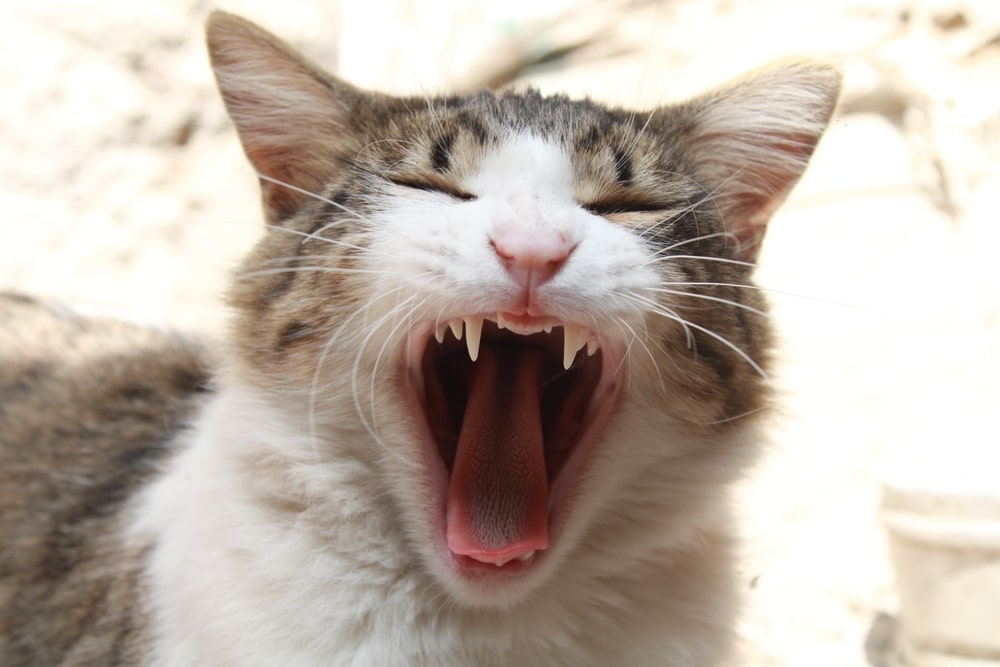The UK’s largest ever study of dental disease in cats, conducted by the Royal Veterinary College (RVC), found 15.2% of cats are diagnosed annually with periodontal disease which includes advanced gum disease, serious tooth problems and pain. This makes periodontal disease the most common health issue our cats face.
Periodontal disease is a serious condition which is difficult to treat and can result in teeth needing to be removed. However, the early stages of the disease include gingivitis (gum disease), which can be reversed with good oral health treatment.
Which types of cats are more likely to develop gun disease and tooth decay?
The study by RVC found that there are certain breeds of cat more likely to develop periodontal disease including Siamese (18.7%), Main Coon (16.7%), British Short Hair (15.5%) as well as cross breeds (15.4%). Interestingly, the body weight of cats with oral disease tends to be higher than cats without the disease.
The risk of periodontal disease also rises as a cat gets older with cats aged 9 to 12 years 6.7 times more likely to develop issues that cats under 3 years of age.
How can you tell if your cat has oral problems?
It’s a good idea to regularly check your pet’s mouth for signs of dental disease. Indicators that all is not well might include:
- Bad breath
- Discoloured teeth
- Bleeding gums
- Loose or fractured teeth.
If you spot any of these issues, please consult your vet for help and advice.
How can you improve your cats oral health and prevent gum disease?
The best way to care for your cat's teeth and gums involves a combination of daily brushing, proper nutrition, and supplementary dental care. If you can, it is good to get your cat used to having their teeth brushed.
Brushing Your Pet’s Teeth
Brushing is the most effective way to maintain your pet’s oral health and prevent plaque build-up.
- Start Slowly: Begin by familiarising your pet with the process. Use your finger to gently touch their muzzle and teeth before introducing a toothbrush.
- Use Pet-Safe Toothpaste: Always use toothpaste formulated especially for pets, as human toothpaste contains fluoride, which is toxic to animals.
- Choose the Right Brush: Use a soft-bristled toothbrush or a finger brush designed for cats. Perhaps start with finger brushing before introducing a toothbrush.
- Technique: Brush daily or at least 2–4 times a week, focusing on the gumline where plaque accumulates. Use gentle circular motions and reward your pet afterwards.
Supplementary Dental Care
If your cat can’t cope with brushing or as an additional measure, consider using products designed to help with cat oral hygiene. These products include:
- Dental Gels and Rinses: Products containing chlorhexidine can kill bacteria and reduce plaque. They are particularly useful for cats that don’t like brushing or have sensitive gums.
- Specialist Diets: Some dry foods are formulated with textures that mechanically clean teeth while chewing. Your vet will be able to make recommendations.
It’s also important to get regular check ups for your cat that should include a check of their teeth. Schedule dental check-ups at least annually with your vet to assess tartar build-up and general oral health.
By combining daily brushing with appropriate diets and dental products, you can significantly reduce the risk of dental diseases in your cat and keep their teeth and gums healthy.
If you are at all worried about your cat, please talk to a vet as soon as possible to get a veterinary diagnosis, advice and treatment.

